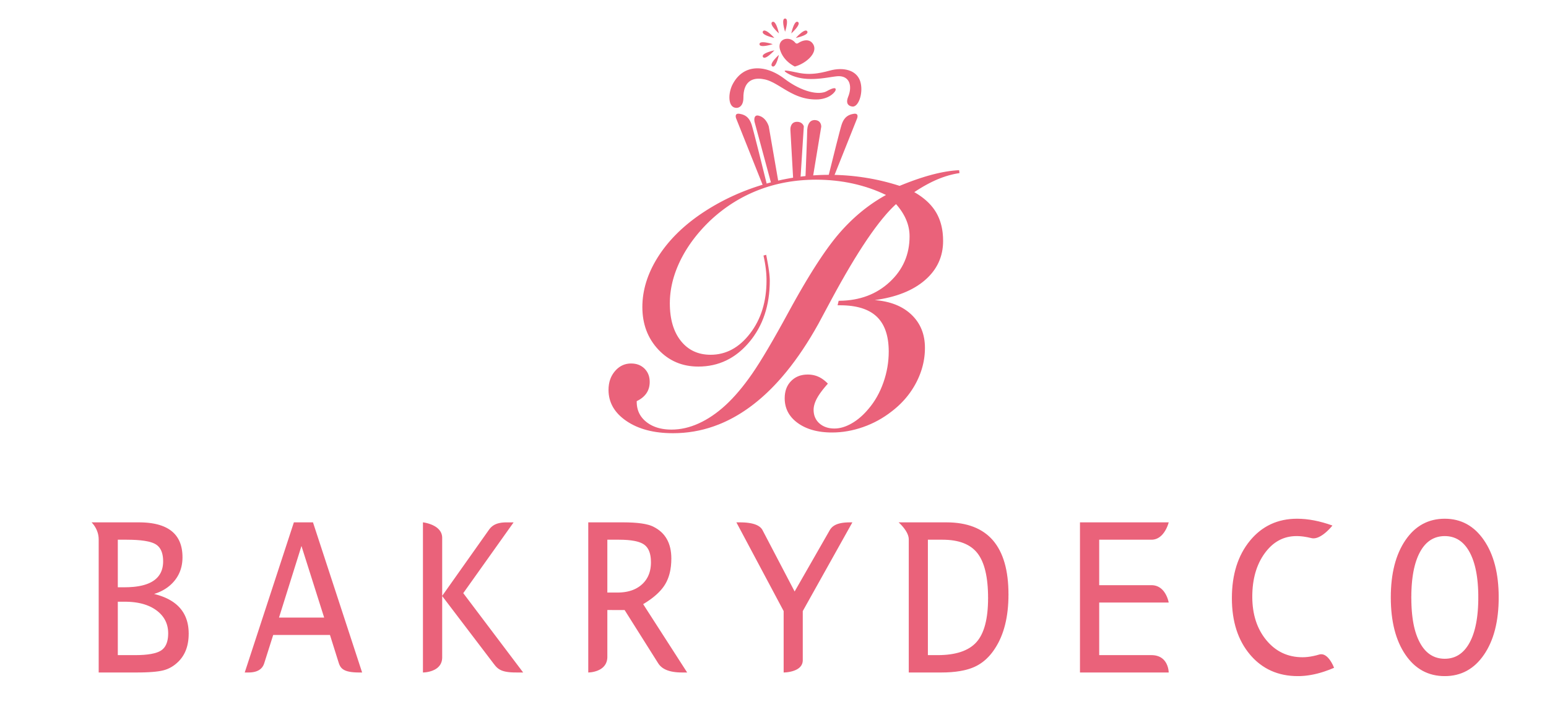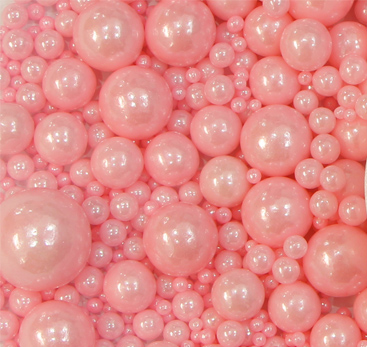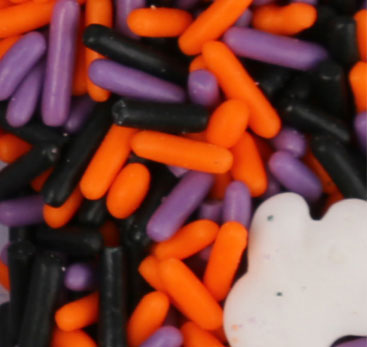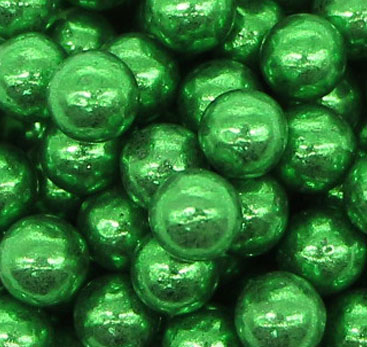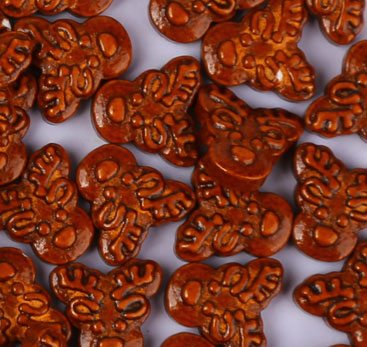More than just a garnish, sprinkles—those small, brilliant bursts of taste—are a cultural phenomenon that turns sweets into pieces of art. From Halloween pumpkin-shaped sprinkles to Christmas snowflake-shaped sprinkles, these sweet treats have won over customers, sparked creative product lines for businesses, and presented profitable prospects for distributors.
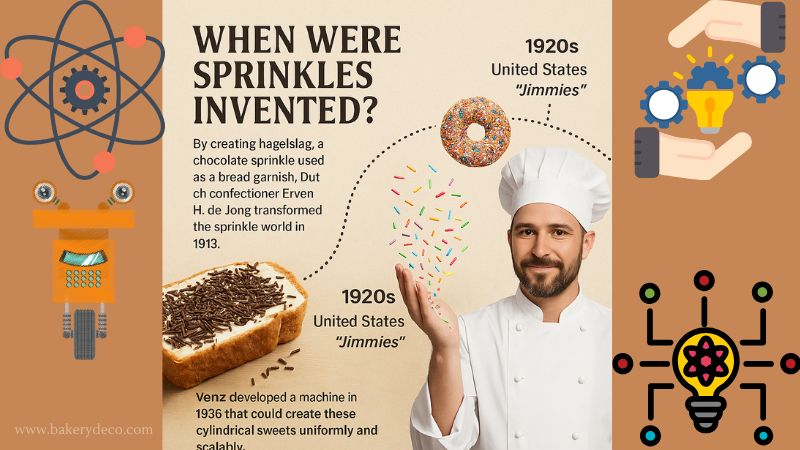
But when and how did sprinkles develop into the vivid, flexible decorations we know today? This post examines the history of sprinkles, their growing popularity, and their modern commercial applications, offering insights for companies seeking to capitalize on this timeless treat.
The Origins of Sprinkles: A Sweet Beginning
The gossip of sprinkles starts in the late 18th century with nonpareils, small sugar beads used to decorate elaborate confectionery centerpieces called pièces montées in France. Made from sugar and starch, these early sprinkles were appreciated for their delicate texture and visual appeal, hence earning the moniker "nonpareil," which in French means "without equal." Primarily crafted by talented bakers, nonpareils were a luxury that added refinement to desserts for the affluent.
Dutch Sprinkle Revolution
By creating Hagel lag, a chocolate sprinkle used as a bread garnish, Dutch confectioner Erven H. de Jong transformed the sprinkle world in 1913. For those wondering when were sprinkles invented, this marks one of the earliest recorded instances. Designed with Venz, a Dutch business that made it a household staple, Hagel lag was named for its similarity to hail—a regular weather occurrence in the Netherlands. Venz developed a machine in 1936 that could create these cylindrical sweets uniformly and scalably. Lower percentages were labeled as chocolate Hagel lag; only Hagel lag with over 32% cocoa content could be labeled as chocolate Hagel lag. This invention turned sprinkles from a niche adornment into a mass-market product.
The Jimmies Story
The sprinkler slink in the United States followed a different direction. Founded in Brooklyn, New York, the Just Born candy company claims that Sam Born developed chocolate sprinkles known as "jimmies" in the 1920s. Originally sold as a topping for cakes and ice cream, these rod-shaped candies were named after an employee, James Bartholomew. However, newspaper archives show that chocolate sprinkles were in use as early as 1921, when Just Born was incorporated, thus casting doubt on their assertion. Still, Just Born's branding initiatives popularized the phrase "jimmies" in areas like Boston and Philadelphia, where it has become a favorite synonym for sprinkles.
The Evolution of Sprinkles: From Nonpareils to Rainbow Delights
Driven by developments in food processing and a growing customer desire for colorful, exciting sweets, sprinkles underwent significant changes throughout the 20th century. In the United States, sprinkles were a popular garnish in the 1920s; businesses like Sunshine's Loose-Wiles Biscuit Company debuted "chocolate sprinkle cookies" in 1927.
When were rainbow sprinkles invented
Rainbow sprinkles, which have become a mainstay in ice cream, cupcakes, and cakes, originated from the post-World War II sugar boom. Their vivid hues and crispy texture made them a favorite for adding visual flair and texture to desserts.
For a sprinkle of innovation, the 1980s brought a sea change. To increase their appeal, manufacturers added various forms—such as stars, hearts, and flowers—and flavored variations, including cinnamon and peppermint. Trendy ways to celebrate seasonal events are holiday-themed sprinkles such as Halloween witches, Christmas snowflakes, Easter eggs, and Valentine's hearts. Driven by demand in both retail and wholesale sectors, these unique forms and tastes have turned sprinkles into a year-round commodity.
Sprinkles in modern culture: a consumer favorite
Sprinkles are a worldwide phenomenon, known by several names: "hundreds and thousands" in the UK, "vermicelli" in some Commonwealth nations, and "jimmies" in parts of the United States. From home cooks to professional pastry chefs, their adaptability makes them a must-have for customers. Sprinkles are now a declaration of joy, nostalgia, and inventiveness rather than only a garnish. Instagram and other social media sites have increased their popularity as influencers flaunt sprinkle-studded cakes and cupcakes, garnering hundreds of likes.
Sprinkles are great for turning basic delicacies into striking masterpieces for consumers. With rainbow sprinkles, a basic donut becomes a work of art; holiday sprinkles add festive cheer to baked goods. Halloween sprinkles featuring ghosts and pumpkins are popular at fall celebrations; for instance, Christmas sprinkles shaped like trees and stars enhance holiday delicacies. This customer-driven demand has inspired companies to create superior, non-bleeding sprinkles that keep vivid colors without sacrificing appearance.
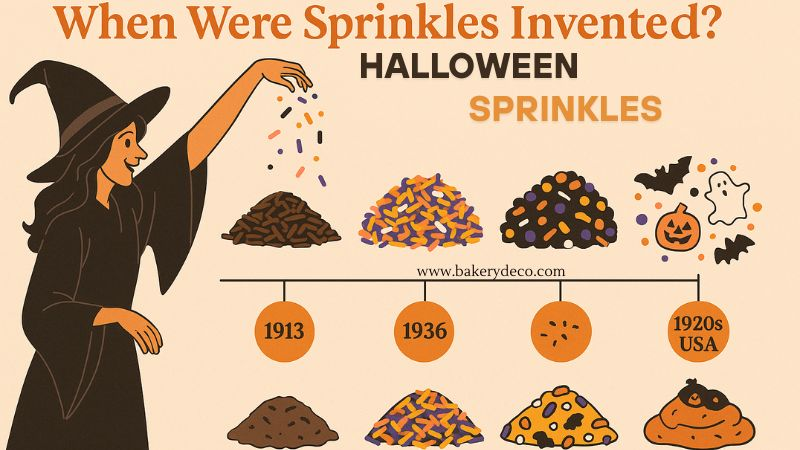
Commercial Opportunities: Sprinkles as a Business Goldmine
In the growing dessert market, sprinkles offer businesses and wholesalers profit. For mass production and distribution, their low production costs, long shelf life when stored correctly, and universal appeal make them ideal. Here are some ways companies might use sprinkles to succeed financially:
1. Innovative Product Development
Companies are stretching sprinkle innovation envelope to fit customer tastes. Unique marketing points include flavored sprinkles, such as cotton candy for children's events or peppermint for the Christmas season. Made using plant-based dyes, organic and natural sprinkle choices satisfy health-conscious consumers; glittering edible sprinkles appeal to the premium market. To appeal to seasonal demand, companies can also design themed sprinkle mixes—think of valentines sprinkles or easter sprinkles. For instance, a "Unicorn Magic" sprinkle mix featuring pastel hues and star-shaped forms has taken social media by storm, increasing sales for stores and bakeries.
2. Wholesale Supply Chains
Wholesalers provide bulk sprinkles for bakeries, ice cream shops, and grocery stores. Wholesalers can satisfy the various needs of their customers by offering a selection of items, including rainbows, chocolate, holiday-themed, and bespoke mixes. Specifically sought after are premium, non-bleeding sprinkles since they guarantee professional-grade results for bakers. Wholesalers can also collaborate with manufacturers to offer private-label sprinkler lines, allowing companies to produce branded goods at a reduced cost.
3. Functional Foods and Novel Applications
Sprinkles are no longer limited to desserts. Still a typical breakfast garnish in the Netherlands, Hagel lag is spread over buttered toast. To appeal to health-conscious consumers seeking texture and taste, companies can explore related uses, such as yogurt toppings or granola bars infused with sprinkles. A hit at American children's birthdays, confetti cakes—where sprinkles are blended into the batter for a vibrant effect—offer a creative variation on classic cakes.
4. Seasonal and Event-Based Marketing
One gold mine for seasonal marketing is holiday sprinkles. Key retail times feature Halloween sprinkles with eerie forms, Christmas sprinkles with festive designs, Easter sprinkles displaying pastel eggs, and Valentine's sprinkles with red and pink hearts, all of which promote sales. To appeal to consumers, companies might design limited-edition sprinkle mixes linked to specific festivals, such as Pride Month rainbows or fourth of July stars. To boost order value, wholesalers can package seasonal goods with complementary items, such as frosting or baking kits.
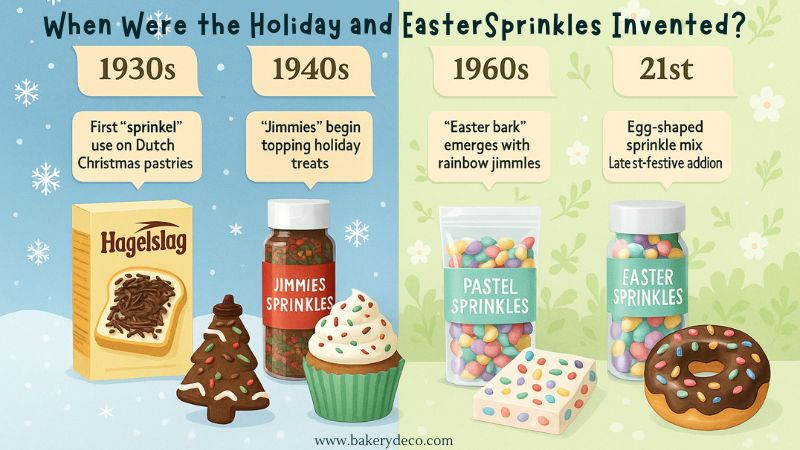
5. Sustainability and Transparency
Modern consumers value transparency and sustainability. Using environmentally friendly packaging, including biodegradable pouches and natural ingredients, helps businesses differentiate their sprinkle products. Emphasizing the origin narrative of sprinkles—that of Dutch Hagel lag or French nonpareils—adds credibility to marketing campaigns and resonates with consumers who prioritize ethical companies.
The Jimmies Controversy: A Historical Debate
The word "jimmies" generated discussion about its source. One hypothesis relates to Just Born's employee, James Bartholomew. Another claim is that it was inspired by Dr. Sidney Farber's Jimmy Fund, a charity funded by Boston's ice cream store, Brigham's, which paid a penny extra for chocolate sprinkles. To refute this, the Jimmy Fund was founded in 1948—well after the first known use of the term in 1930. Snopes refuted a more divisive hypothesis that claimed a racist connection to Jim Crow rules, but no data supports this. Whatever their name, jimmies are a popular topping—especially in New England, where they are associated with the ice cream cone.
Do Sprinkles Still Matter in 2025?
Given the world of gourmet ice cream flavors and hand-crafted sweets, some might wonder if sprinkles are still relevant. The response is a loud, resounding yes. Sprinkles have a nostalgic, egalitarian appeal that cuts across fads. For instance, pastry maker Paola Velez has adopted sprinkles to bring delight to her works as a protest against austere gastronomic standards. Their constant attraction guarantees lasting childhood memories and enhances their visual attractiveness.
Sprinkles are an inexpensive way for companies to improve their offerings. With a rainbow sprinkle shower, a basic cupcake looks Instagram-worthy; holiday-themed sprinkles generate festive excitement. Offering seasonal promotions and bulk discounts, wholesalers can capitalize on this and ensure consistent demand from bakeries and dessert stores. Originally developed in the early 20th century, cake sprinkles first surfaced in 1920s records.
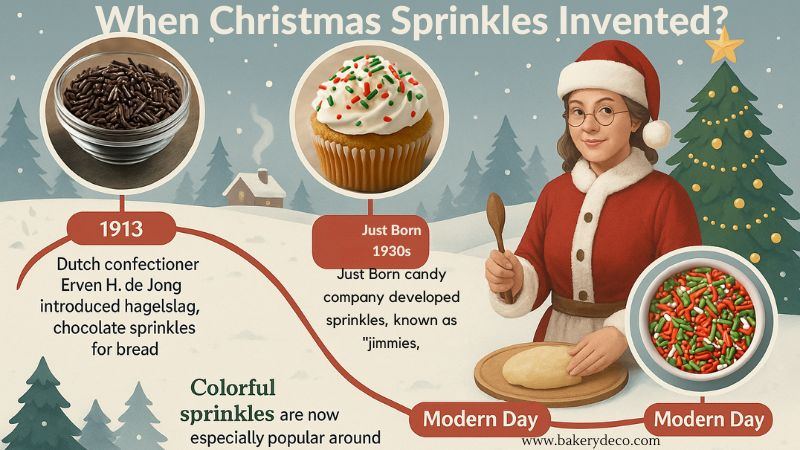
The Future of Sprinkles: Trends and Innovations
Looking ahead, the sprinkle business is expected to expand even further. These tendencies are worth observing:
Customizable Sprinkles: Businesses can offer do-it-yourself sprinkle kits, allowing customers to mix their colors and shapes for unique baking projects.
Functional Sprinkles: Combining fun with utility, adding vitamins or protein to sprinkles could appeal to consumers who prioritize their health.
Tech-Enhanced Production: Advances in food technology will allow producers to create more complex forms and flavors, such as 3D-printed sprinkles or glow-in-the-dark variants for Halloween.
Global Fusion: In many markets, businesses can introduce fresh sprinkles influenced by global customs, such as fairy bread or hagelslag.
Conclusion:
From their 18th-century beginnings as French nonpareils to the 1913 creation of Dutch Hagel lag and the emergence of American jimmies, sprinkles have a rich legacy that continues to evolve. Offering countless possibilities for consumers, businesses, and distributors, their adaptability, cost-effectiveness, and worldwide appeal make them a pillar of the dessert business. These small treats have significant power, whether they are Halloween sprinkles lending eerie flair or Christmas sprinkles inspiring celebration. Companies can ensure that sprinkles remain a delicious mainstay for the next generation by embracing innovation—through creative tastes, forms, and sustainable processes.
